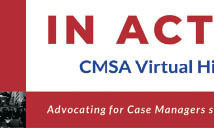Workplace violence that occurred during the pandemic is not a new issue as it has been increasing in numbers since 2016. The pandemic, however, increased the number of instances of workplace violence due in part to two conditions that needed to be maintained for safety in the work environment: isolation and decreased ability to communicate to the healthcare team.
Workplace violence faced by nurses, social workers, case managers and the healthcare team within the hospital and critical care access hospitals has increased from 2016 numbers to 2021 with 48% reporting intervening after witnessing an instance of bullying, 43% stating they had not seen such behavior, and just over half over the healthcare workers who responded to the ANA 2021 nursing trends survey stating they have been personally a victim of verbal assault or bullying by a patient.
Due to the pandemic in 2019 to current day, the media has focused on workplace violence and the need for legislation and standards of care necessary to support change in the workplace and promote a new culture of safety for all healthcare workers.
Mahatma Gandhi is quoted as saying, “Be the change you wish to see in the world.” This could not be a truer statement when it comes to addressing workplace violence. Change is needed for patient and family interventions with staff, staff-to-staff communications and management-to-staff communications.
Why has this occurred and continued to thrive when in the beginning of COVID-19, hospitals were hailed as rising to the occasion against tremendous odds and maintaining resilience with grace? The answer is, over time, any environment under extreme stress will begin to break down, according to the Pulse on the Nation’s Nurses Survey part of the ANA’s COVID-19 survey series. Forty-seven percent of nurses report having experienced workplace violence during COVID-19. Staffing shortages have made the ability to recuperate more challenging.
Case managers are at particular risk for workplace violence due to the nature of their jobs. Case management is defined by CMSA as “the collaborative process of assessment, planning, facilitation, care coordination, evaluation and advocacy for options and services to meet an individual’s and family’s comprehensive health needs through communication and available resources to promote patient safety, quality of care, and cost-effective outcomes” (CMSA 2016). It is within this role that case managers interact with the patient’s family and staff. Case managers shift daily from the role of advocate, negotiator and educator, to assist both patients and families to navigate the red tape of healthcare. This environment during COVID-19 has become quicker and faster to facilitate safe transitions from one level of care to the next, opening much needed beds for COVID-19 patients. New CMS waivers, state regulations and COVID-19 restrictions have created an environment with weekly and sometimes daily changes in regulations. This ever-changing environment makes it challenging for patients and families to trust case managers who are directed with providing this information.
The environment of care has changed during the pandemic, creating significant barriers for patients and families with limited access to communication directly to health-care providers. This lack of interaction has created a space for workplace violence to further evolve.
Workplace violence can take many forms including verbal and physical abuse, bullying, harassment, exclusion and intimidation and can be targeted and perpetrated by a range of individuals including patients, patient family members, colleagues and management. The effects can impact professional, physical and psychological consequences for all members of the healthcare team.
Addressing these issues in the healthcare environment will require a collaborative approach and input from team members at all levels within the healthcare team: administration, physicians, nurses, case managers, rehabilitation team members and nurses’ aides (Al-Qadir M.M., 2021).
Workplace violence has been an unspoken term in healthcare until the pandemic, when maintaining a culture of healing has become a priority for all healthcare facilities. In the past healthcare workers have often been made to feel that verbal assault or bullying by a patient or family member is just a part of the job (Richard J. Senior Health.com Media). The pandemic began in 2019 with the media focused on the heroes of healthcare and the angelic role the nurses and the healthcare team have in saving lives. As time progressed with COVID-19 and after many variations of the virus, along with hopes that the pandemic would soon end, the general public’s frustration and built-up anger at the lack of access to healthcare began to redirect toward healthcare workers.
During the past two years, violence against healthcare workers verbally and physically by patients and/or family members has become an area of increased interest to both The Joint Commission (TJC), which is implementing new workplace violence mandates as of January 2022, and to many local nursing and social work organizations. The American Nurses Association has proposed and supported legislation nationally to increase funding for the development of programs to protect all healthcare workers from this new barrier to providing effective and safe care for patients and maintaining a culture of excellence in healthcare. New workplace violence mandates will be added to all Joint Commission-accredited facilities for both acute hospitals and critical access hospitals requiring the following mandatory criteria for prevention and change in the culture to improve safety in the hospital environment. The criteria include the following changes to the workplace environment credentialling:
- Defining workplace violence for acute and critical access hospitals
- Leadership oversight for workplace violence programs
- Worksite analysis or the type of violence and mechanisms need to establish a culture of safety
- Developing policies and procedures for the prevention of workplace violence
- Reporting systems, data collection, and analysis
- Post-incident strategies
- Training and education to decrease workplace violence. For example, CPI training and certification for all staff in high-risk environments (TJC 2022) is part of the overall training and education.
Legislative efforts for creating a safer workplace environment have been promoted and led by the National American Nurses Association, and local chapters of the American Nurses Association at the state level are developing mirror bills and initiatives to support nurses and healthcare care team members to prevent workplace violence. Nationally, the Workplace Violence and Prevention for Healthcare and Social Service Workers Act (H.R. 1195) passed in April 2021 with bipartisan support in the House and is awaiting Senate support. The Office for Government Accountability estimates that workplace violence rates in healthcare and social assistance settings are 5-12 times higher than estimated (ANJ 9.2021).
At the state level, the ANA of Massachusetts is working on HB 2465 to promote employers to develop and implement programs to prevent workplace violence, and HB 2506 is an act to promote healthcare facilities to develop and promote programs to prevent workplace violence. Currently, eight states already have employer-based workplace violence programs: CA, CT, IL, MD, MN, NJ, OR and WA. Massachusetts is hoping to be the ninth.
Many local healthcare facilities in Massachusetts and across the nation are already adapting to create cultures of non-violence, recognizing that whether mandated by legislation or coming in January 2022 from TJC’s revised Workplace Violence Prevention requirements, a new standard is coming for safety in the healthcare environment. These changes will impact not only the safety of patients, families, staff and administration, but will directly impact improvement in the overall quality of care and communication. The Joint Commission states that 73% of non-fatal workplace injuries and illness for healthcare workers are directly connected to workplace violence. Incidents of violence are significantly under-reported by all healthcare workers and can lead to ineffective patient care, psychological stress of the healthcare worker, job dissatisfaction, absenteeism, high turnover and higher costs for patient care. Tackling this issue will require a comprehensive and collaborative approach within the healthcare team and in the community. All stakeholders will be necessary to formulate a healthier and safer place for nurses, case managers and all healthcare workers by defining workplace violence changes in legislation, education, prevention and standards for developing evidence-based guidelines for workplace violence.
REFERENCES
Al-Qadir M.M. RN, MSN, MHA. Reference Workplace Violence in Nursing: a concept analysis Journal of Occupational Health, 2021.63: e12226. https://doi.org/10.1002/1348-9585.12226.
E. Grant PHD, RN, FAAN. Healthy Nurse, Healthy Nation 2020-2021. Healthy Nurse Survey. AJN (Oct. 2021).
CMSA (2016). Case Management Society of America Standards of practice for Case Management. Case Management Society of America.
Center for Medicare and Medicaid, Coronavirus Waivers and Flexibilities. https://www.cms.gov/about-cms/emergency-preparedness-response-operations/current-emergencies/coronavirus-waivers.
The Joint Commission, Environment of Care Chapter.02.01.01 for Workplace Violence. Analysis of care. Education, prevention. And best practices to conform to applicable laws and regulations. New Standards effective January 1 2022.
L. Strand and R. Francis MPH, MCHES. Violence prevention measures move in Congress. Assaults on the job are hazards for nurses. American Nurse Journal 9.2021.
R. Senior, 2021 Nursing trends and salary survey results. Workplace violence-What’s being done what can be done. American Journal of nursing November 2021.





